- Afrikaans
- Albanian
- Amharic
- Arabic
- Armenian
- Azerbaijani
- Basque
- Belarusian
- Bengali
- Bosnian
- Bulgarian
- Catalan
- Cebuano
- Corsican
- Croatian
- Czech
- Danish
- Dutch
- English
- Esperanto
- Estonian
- Finnish
- French
- Frisian
- Galician
- Georgian
- German
- Greek
- Gujarati
- Haitian Creole
- hausa
- hawaiian
- Hebrew
- Hindi
- Miao
- Hungarian
- Icelandic
- igbo
- Indonesian
- irish
- Italian
- Japanese
- Javanese
- Kannada
- kazakh
- Khmer
- Rwandese
- Korean
- Kurdish
- Kyrgyz
- Lao
- Latin
- Latvian
- Lithuanian
- Luxembourgish
- Macedonian
- Malgashi
- Malay
- Malayalam
- Maltese
- Maori
- Marathi
- Mongolian
- Myanmar
- Nepali
- Norwegian
- Norwegian
- Occitan
- Pashto
- Persian
- Polish
- Portuguese
- Punjabi
- Romanian
- Russian
- Samoan
- Scottish Gaelic
- Serbian
- Sesotho
- Shona
- Sindhi
- Sinhala
- Slovak
- Slovenian
- Somali
- Spanish
- Sundanese
- Swahili
- Swedish
- Tagalog
- Tajik
- Tamil
- Tatar
- Telugu
- Thai
- Turkish
- Turkmen
- Ukrainian
- Urdu
- Uighur
- Uzbek
- Vietnamese
- Welsh
- Bantu
- Yiddish
- Yoruba
The enamel pot is a timeless kitchen essential that combines classic style with modern performance, offering unmatched versatility, durability, and visual appeal. Crafted from heavy-duty cast iron and finished with a smooth enamel coating, this pot ensures excellent heat retention and even distribution, allowing for consistent cooking results every time. Whether you're simmering soups, braising meats, cooking stews, or preparing sauces, the enamel pot excels across a wide range of culinary tasks. One of its key advantages is the non-reactive enamel surface, which means you can confidently cook acidic foods like tomatoes or wine-based dishes without affecting flavor or damaging the interior.
Unlike raw cast iron, the enamel surface requires no seasoning and is resistant to rust, making maintenance incredibly easy. The smooth coating also allows for easy food release and quick cleanup, whether you're cooking on gas, electric, ceramic, or induction stovetops. Oven safe and robust enough to handle high temperatures, this pot transitions beautifully from stove to oven to table. Its vibrant color and glossy finish not only enhance your cooking experience but also add a touch of elegance to your kitchen décor. The sturdy lid locks in moisture and flavor, while the ergonomic handles offer a safe, comfortable grip when transferring the pot. Built to last for generations, the enamel pot is more than just cookware—it’s a multifunctional, heirloom-quality tool that enhances every meal with its superior performance and timeless charm. Whether you're an experienced chef or a passionate home cook, this pot will quickly become your favorite go-to for everyday cooking and special occasions alike.
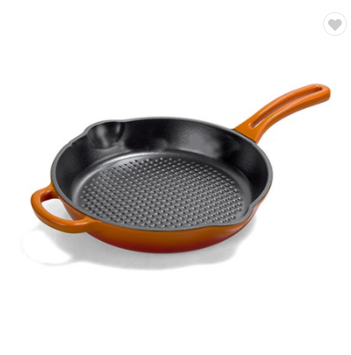
New Design Custom Non Stick Round Enameled Smooth Cast Iron Cookware Skillet
View More
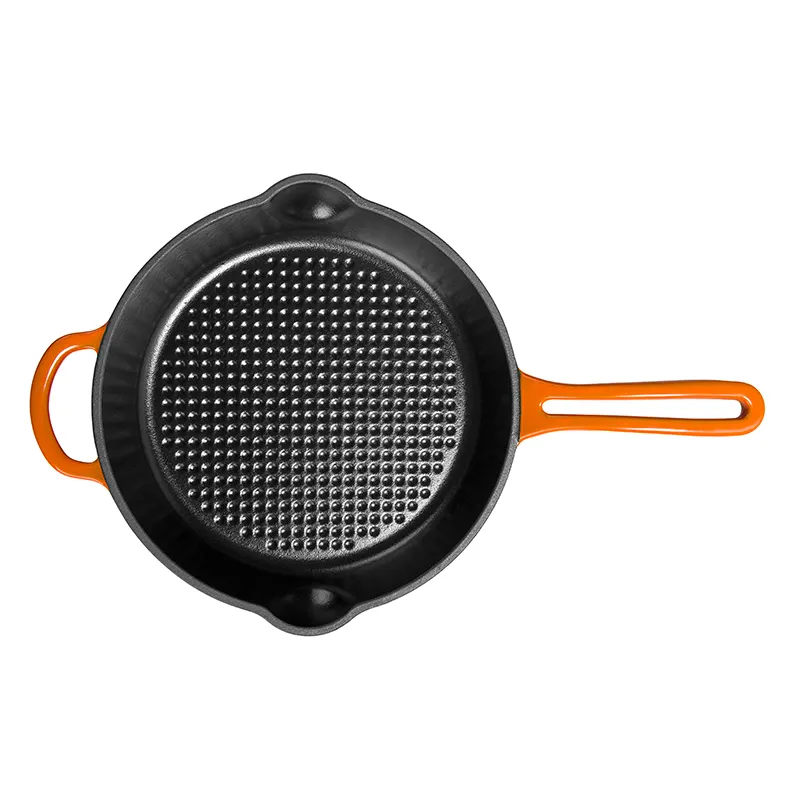
Customizable High Quality Non Stick Enameled Smooth Cast Iron Cookware / Skillet
View More
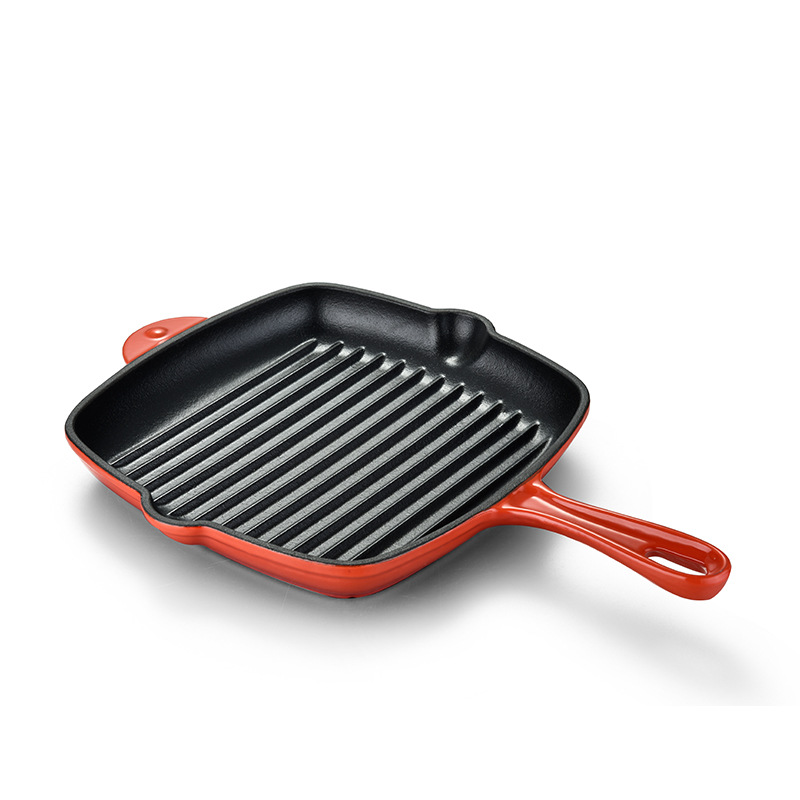
China excellent quality fast delivery cast iron enameled steak frying pan
View More
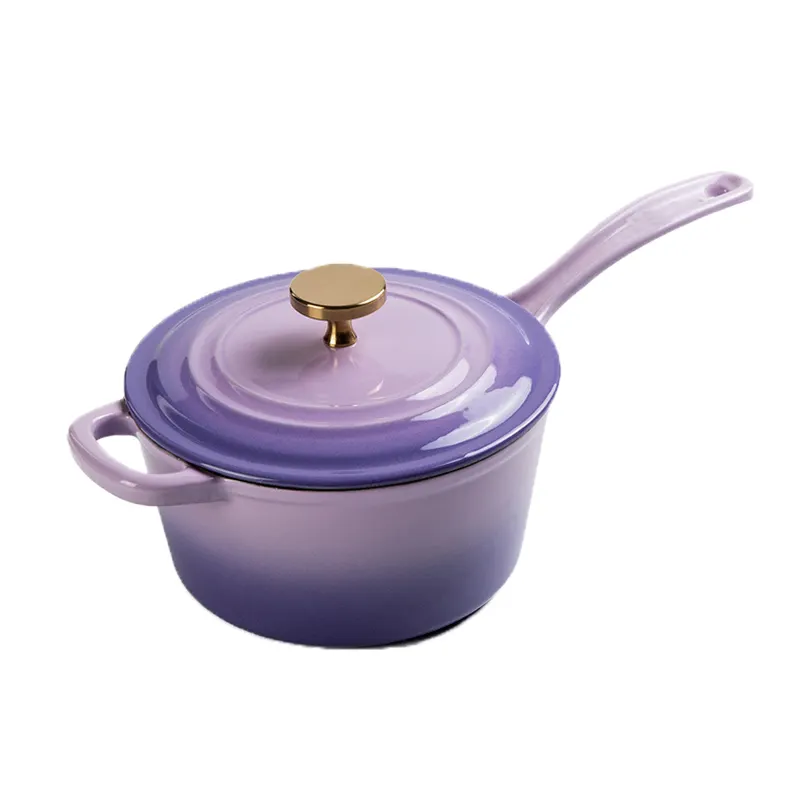
Premium Cast Iron Enamel Milk Pan Stew Pot / Stock Pot With Iron Handle
View More
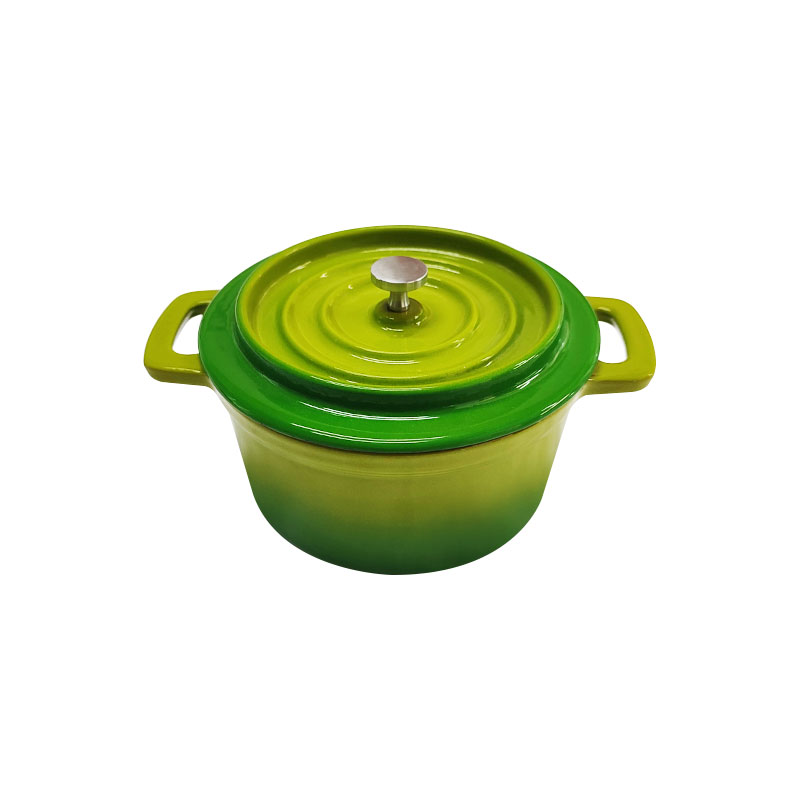
Mini Round Enamel Cast Iron Casserole Pot With Two Handles
View More
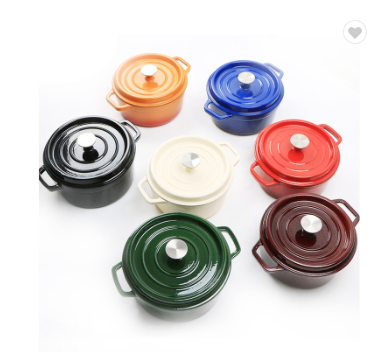
High Quality Double Ears Cast Iron Casserole Cooking Pot With Colorful Enamel Coating
View More
Which Is Better, Cast Iron Or Enameled Cast Iron?
When choosing between cast iron and enameled cast iron cookware, it's important to understand that both offer exceptional performance, but each brings unique advantages that cater to different cooking needs and preferences. Traditional cast iron is celebrated for its unbeatable durability, excellent heat retention, and natural non-stick properties that improve with use. It’s the go-to choice for high-heat cooking methods like searing, frying, or grilling. When properly seasoned, a raw cast iron pot creates a naturally slick surface that makes it ideal for browning meats or baking cornbread. It’s incredibly resilient and can last for generations with minimal care, even under intense cooking conditions such as open flames or high oven heat.
Enameled cast iron, however, offers all the thermal benefits of traditional cast iron—superior heat retention and even heat distribution—while eliminating some of the maintenance concerns. The glossy enamel coating on the surface removes the need for seasoning and makes the cookware resistant to rust, which is a major advantage for those who prefer low-maintenance kitchen tools. It also allows for cooking acidic foods like tomato sauce, wine reductions, or vinegar-based dishes without any metallic taste or damage to the pot. This non-reactive surface expands the range of recipes you can prepare and ensures food flavors remain pure and balanced. Enameled cast iron is also easier to clean, often requiring only mild soap and water, unlike traditional cast iron, which requires more careful handling to preserve the seasoning.
In terms of versatility, enameled cast iron cookware shines in both function and form. It is equally effective on all stovetops—including induction—and is oven safe, making it perfect for everything from slow-cooked stews to baked casseroles. Beyond performance, enameled cast iron offers a visual upgrade to your kitchen. With a wide range of vibrant colors and smooth finishes, it can double as a serving dish, going directly from the stove to the table with elegance. The aesthetic appeal is a significant benefit for anyone who enjoys presenting food beautifully at family dinners or special gatherings.
While traditional cast iron is unmatched for high-heat searing and can withstand more rugged use, enameled cast iron is more user-friendly and ideal for everyday cooking. It combines the best features of cast iron with modern convenience, offering an excellent balance of performance, style, and ease of use. There’s no need to worry about seasoning or specific cleaning methods, making it accessible to both seasoned cooks and beginners. Ultimately, the choice between cast iron and enameled cast iron comes down to how you cook and what features matter most to you. For those who value simplicity, beauty, and versatility without compromising performance, enameled cast iron is the superior option. It offers the timeless benefits of cast iron in a form that’s practical, low-maintenance, and undeniably stylish—making it an ideal investment for any kitchen.
Is Enamel Better Than Ceramic?
When comparing enamel and ceramic cookware, enamel often emerges as the superior choice due to its strength, versatility, and overall user-friendly design. While both materials offer non-reactive surfaces ideal for cooking, enamel—especially when applied over cast iron—combines the durability of metal with the smooth, easy-to-clean surface of a glazed finish. This creates a product that is not only beautiful but also built to withstand high temperatures, rapid heating, and the rigors of daily use. Unlike many ceramic pots that can be fragile and prone to chipping or cracking under sudden temperature changes, enamel-coated cookware is far more resistant to thermal shock. It can move seamlessly from stovetop to oven, making it perfect for recipes that require both simmering and baking. In addition, enamel does not stain easily and retains its vibrant color and glossy finish over time, whereas ceramic coatings may discolor or degrade with repeated use. Another key advantage is that enamel cookware is often applied over a heavy-duty base, such as cast iron, giving it excellent heat retention and even heat distribution. This makes enamel cookware especially suitable for slow-cooked meals, stews, and sauces. It also does not require seasoning like traditional cast iron, nor does it have the wear concerns of ceramic's delicate glaze. Enamel cookware offers the ideal balance of performance, longevity, and style. It is non-toxic, non-reactive, and compatible with all cooktops, including induction. For home cooks seeking a beautiful, reliable, and long-lasting kitchen companion, enamel is often the better choice—providing the trusted functionality of traditional cookware with the added benefits of modern materials and design.
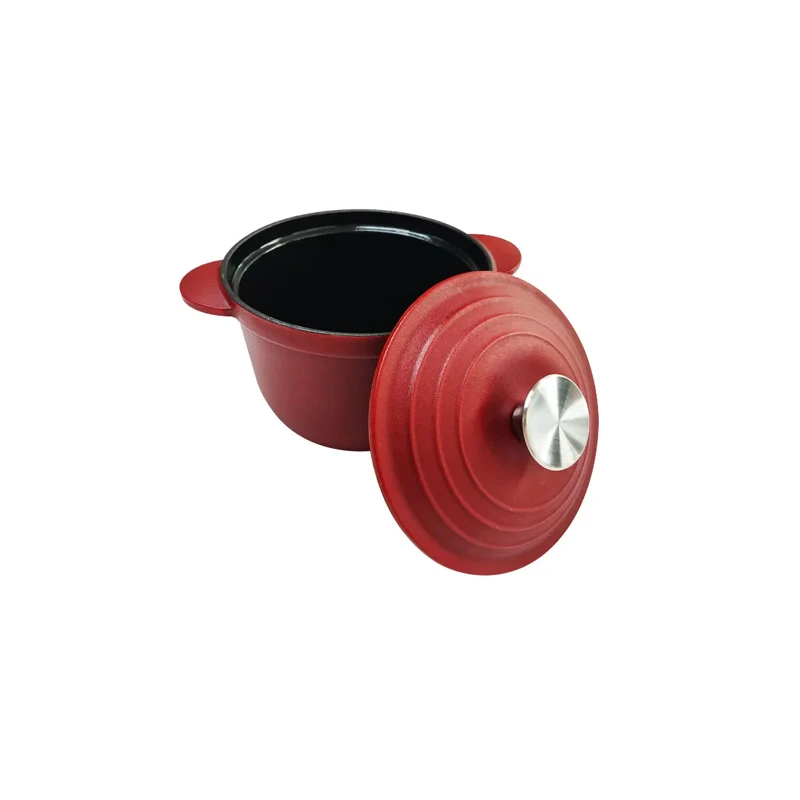
Inquire Now for Cast Iron Cookware Deals
Please Fill Out The Form Below And Our Team Will Get Back To You With Pricing, Product Details, And Customization Options.






















